Enable and empower.
That’s how you can build a sales team that continuously contributes to your organization’s growth.
In this article, we’ll talk about sales enablement strategies to help you empower your reps to close more deals.
Let’s dive in.
What is Sales Enablement?
Sales enablement is the process of giving your company’s sales force the resources they need to close more deals. It provides them with the necessary market research, sales assets, and tools to boost their performance.
Sales enablement has a direct impact on sales.
Organizations with a sales enablement strategy in place have seen a 6% to 20% increase in sales.
Moreover, businesses with sales enablement achieve a 49%-win rate on forecasted deals compared to 42.5% by companies who don’t enable their sales processes.
Sounds amazing, right?
But is “sales enablement” a different system altogether that you’ll need to introduce in your sales process?
Not at all.
Sales enablement is not rocket science. With properly planned communication, content creation and distribution, and equipping your team members with the right set of tools, you can easily embark on a sales enablement journey.
You must be already doing some of these. Maybe just not in a structured manner. But how will you know this?
Let’s explore the signs that tell you the need for a sales enablement plan.
Signs you need a sales enablement strategy
You’ll know that something isn’t right when you face challenges in achieving your sales goals or if the sales cycle is longer than industry standards.
So, the first step in planning your sales enablement strategy is to know where you’re falling short. And what else can be the best way than asking the salespeople themselves?
Recently, we asked 74 sales reps about the challenges that slow down their sales cycle.
25% of them said they lack relevant content to share with prospects.
Now THAT’s a clear sign you need a sales enablement strategy.
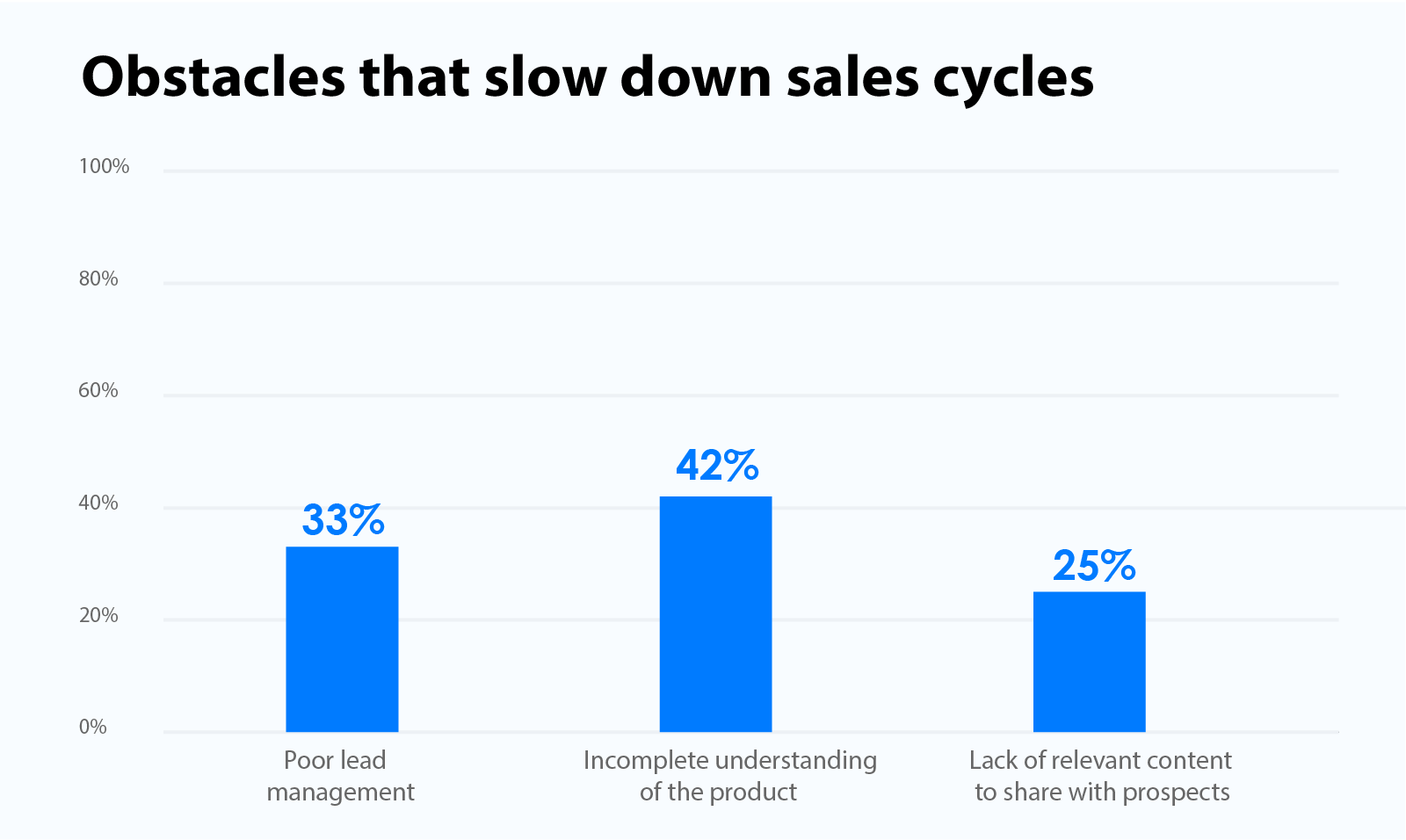
But that’s not it.
Teams often struggle at almost every step of the sales process. Let’s look at these in detail.
1. Lack of a well-maintained content library
Before they complete a purchase, buyers need a ton of information. Did you know that a B2B buyer goes through at least 13 pieces of content before making a purchase? And if your content proves to be useful, the buyer is three times more likely to go for a bigger deal with less regret.
Buyers may want to consume this information in the form of blog posts, e-books, case studies, and white papers. Your marketing teams probably spend hours curating and perfecting this content. But these efforts will be in vain if the sales teams can’t access it conveniently.
2. Your team’s performance is not as expected
You’ve hired the right team. But the results say otherwise. The sales team may be struggling to meet targets, close deals, or build their pipelines. This underperformance has a direct impact on your sales revenue.
It is important to get to the root cause of this issue and help your sales reps. If they are new to your company, you need to create a smooth sales onboarding plan and provide a hands-on learning experience. If you can’t see any visible results even after the training, you might need to rethink the sales process itself.
3. Salespeople can’t understand the buyer’s pain points
The customer’s requirements can evolve over the purchasing cycle. There might be a point where the salespeople don’t understand the challenge or have any content resources for it.
You’ll be surprised to know that 47% of buyers are more likely to buy if the sales rep is informed about their company and business needs.
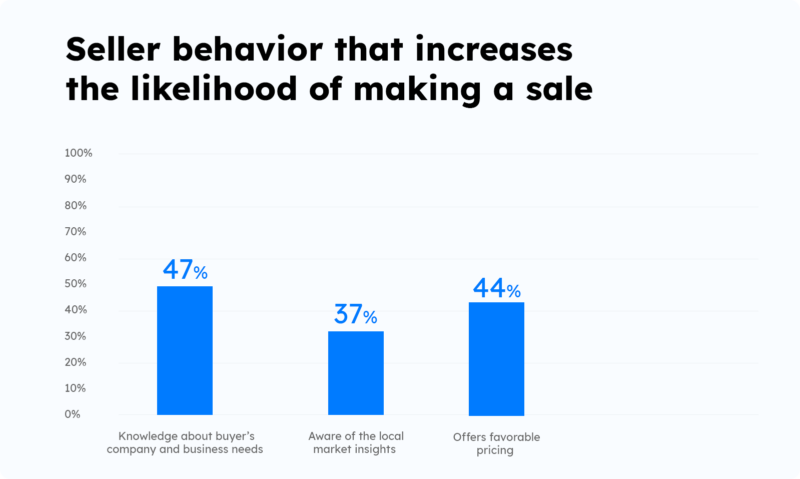
4. Customer retention is low
Sales teams shudder at the thought of clients churning. It is a loss in revenue and the team’s onboarding efforts. Poor customer retention is just an outcome of poor customer engagement.
Sales teams need the right set of tools to create automated touchpoints to collect feedback, share product updates, and foster a long-term relationship with the clients.
5. The sales process is fragmented and unorganized
Along with lower sales productivity and efficiency, a sales process spread over many different platforms makes it hard to close a deal. The salesperson’s time is wasted, and they must keep a tab on what task needs to be done next. This shifts the focus away from closures and creates a fair bit of confusion.
If you are facing any of the above challenges, it’s high time to think about sales enablement.
The benefits of sales enablement
Implementing a sales enablement team from scratch may require time and investment. But these investments present an extremely high ROI in a short period of time. Such as:
- Boost sales revenue and shorten the sales cycle.
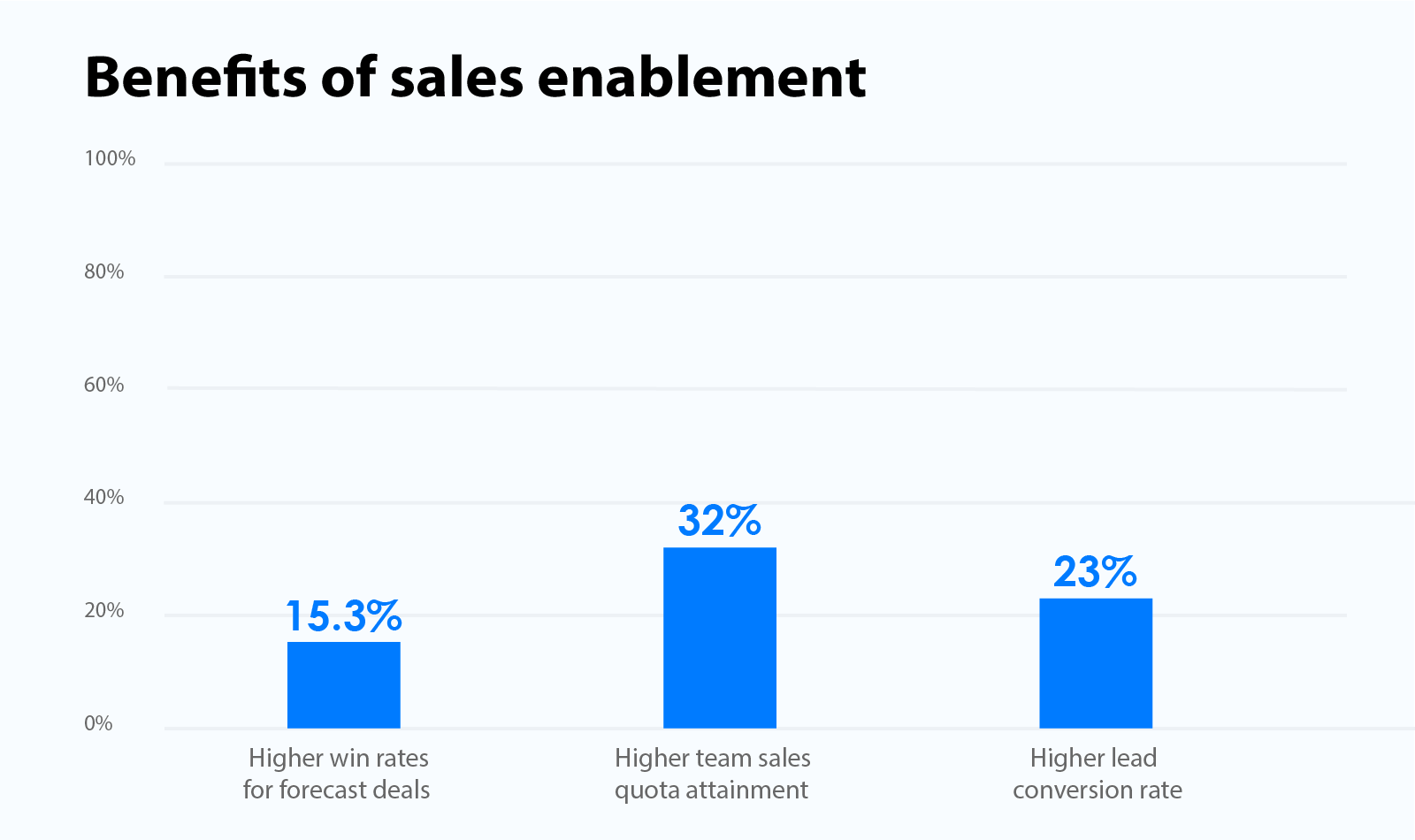
- Increases opportunities to up-sell and cross-sell.
- Personalizes interactions with buyers and allows a targeted marketing strategy.
- Promotes a healthy work culture for all the teams in the company.
- Improves sales performance with a well-defined sales cadence and better monitoring of performance metrics.
Organizations do realize the importance of enabling their sales teams. Sales enablement roles have grown 200% in the last two years. And hiring sales enablement experts is a top priority for organizations (even more than customer service and sales ops roles).
The 5 crucial elements to enable your sales team
In general, you’ll notice that sales enablement tactics circle around information sharing, content creation, and using productivity tools.
But, if you think from a process perspective, it is often difficult to introduce a new system into the existing process.
Let me give you an example.
Your marketing team shoots out an email to the sales teams stating:
“Hey, here’s the content repository for sales. You’ll find proposal decks, case studies, and email templates here.”
Some will notice, some will not. And the problem of finding relevant content will remain unresolved.
But if you tell all the new joiners during the onboarding that here’s where you can find all the assets, they’ll never forget it.
So, let’s solve the sales enablement problem from the beginning.
It starts with equipping your reps with resources during the onboarding itself.
#1 Onboarding
Sales onboarding involves inducting, training, and providing resources to new hires to equip them with the skills and knowledge required to perform in their newly assigned role.
The new joiners must find a way to progress along with upskilling themselves at every phase of their career.
Here’s a 30-60-90-day sales onboarding checklist to ensure your team knows the tools and resources that can help in their sales journey.
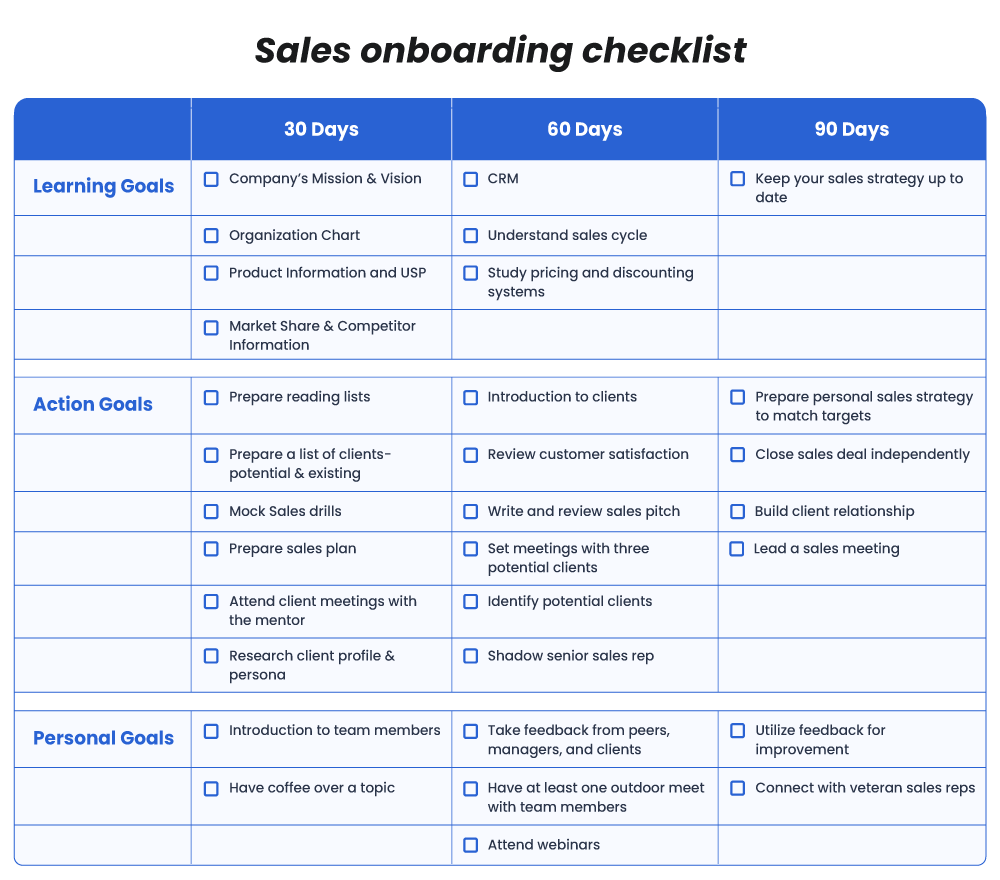
You can also download this editable pdf checklist to share with your team.
#2 Training
With the right team on board, you’re a step closer to higher sales closures.
But sales is a battle that can’t be won without rigorous practice and training.
Your sales team may be diverse, so everyone needs to be on the same page before facing the clients.
“When you’re designing your training programmes, it is important to identify the kind of people that you’ve onboarded based on their past experiences. You should customize your training programmes as far as possible to benefit people from various backgrounds.”
Pearl Singporewalla, Director-Training, UpGrad
Cover these in your sales training program:
1. Product knowledge: Every salesperson must have a comprehensive knowledge of their product. They need to have a clear idea of the feature details, use cases, USP and how the product fares against competitors.
2. Sales process: A salesperson needs to create multiple touchpoints to interact with the client.
Based on our research, 54% of salespeople reach out to their prospects 5-10 times before closing a deal.
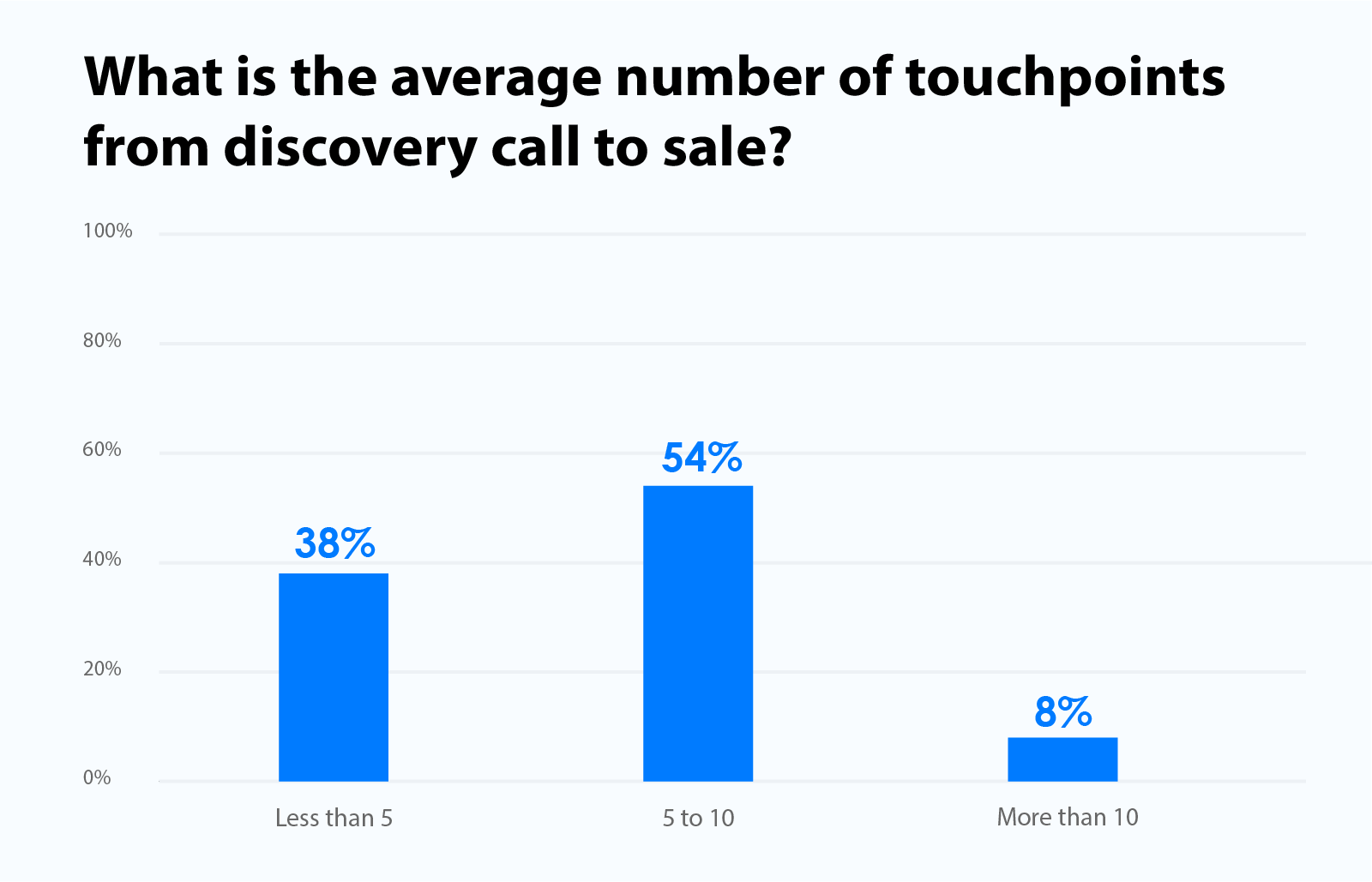
To ensure that the prospects are being nurtured, each salesperson must know the proper stages of the sales process.
The process begins with the customer finding out about the product, followed by the first conversation. The following stages are closing the sale, payment, and onboarding the prospect.
The sales process and its sub-stages differ for B2B and B2C businesses, but the customer journey should be well-planned.
To learn more about enabling your sales team to improve buyer experience, watch our webinar
3. Making use of the sales tools
Sales representatives spend a lot of time tracking customer journey and following up. While the sales tools that different teams use can vary from a simple excel to a complete CRM, the salespeople need to be well versed with them.
Sales tools—for productivity, analytics, customer success, and marketing automation—create a data-driven approach to track closures and pipeline. Salespeople must be trained to make the most of the sales tools.
A catch here is—managers may think that the reps would be comfortable using the CRM tools by themselves. But, in fact, sales users expect some amount of training or introduction to the tool.
For instance, when we surveyed 3,061 CRM customers, we found more than 50% prefer live training over self-paced training.
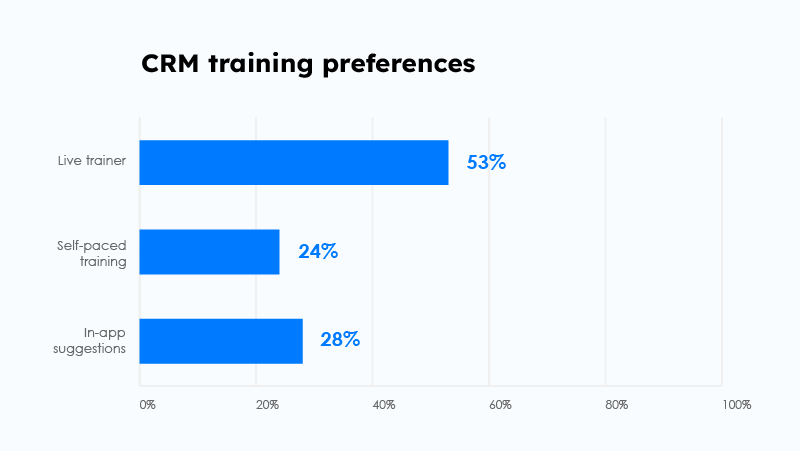
After the right training, most of the salespeople feel ready to hit the field. It is important to provide that extra nudge that moves them towards working independently.
A buddy mechanism, where a peer or a manager supports the salespeople in the first few calls, proves to be helpful.
Now let’s move on to the next crucial aspect of sales enablement—content creation and distribution.
#3 Content
Any successful sales strategy requires content to plan it around.
To engage with prospects and answer their concerns, sales reps need the correct content at the appropriate time.
You’ll be surprised to know that buyers also want to engage with brands through content. 95% of buyers choose a provider who offers content to guide them through each stage of the purchasing process.
In most organizations, the marketing teams are the ones who curate content. But the problem arises when sales and marketing teams are not aligned. Either the content remains inaccessible, or it isn’t as per the sales reps’ expectations.
So, what’s the solution?
It’s right there in front of you.
Align sales and marketing teams
One of the sales enablement goals is to align the marketing and sales teams to form a collaborative unit. Both teams must work together to identify customers’ questions at various stages of the buyer’s journey. They must match those questions and concerns to specific customer profiles. When both teams collaborate, they are bound to exchange ideas for relevant content.
As a result, marketing teams can understand customer queries and develop content to answer those questions. Your sales team can also provide content to their customers to keep them interested in the product.
B2B organizations with closely aligned sales and marketing operations achieve 24% faster three-year revenue growth.
Here are some tips for content creation:
- Collaborate with your sales reps to discover the most common issues they face at each stage of the buyer’s journey.
- Create a customer journey map that links different journey stages to the content you intend to use at those points.
- Identify opportunities where the information can be shared. A valuable resource, such as an infographic or video, does the job when it comes to relevant content.
- Plan and time social media posts to market content directly to buyers.
“I have a sales enablement expert in my team who audits the email and call quality and suggests improvement. The messaging has to be right. Otherwise, the deal will go nowhere.”
Rajat Arora, VP—Sales and Marketing, LeadSquared
#4 Customer engagement
There would be no sales without the customers, so customer engagement should be the foundation of your selling strategy. And the facts speak for themselves because brands with a superior customer experience bring in 5.7 times more revenue.
A customer-centric strategy consists of two critical things—personalization and retention.
Personalization
Personalization begins with gaining a lot of customer data to create a specific profile. Customers don’t like to be numbers on a list; instead, they prefer personalized communication with someone they could relate to.
A simple solution to ensure personalization at every stage of the sales is:
- Distribute leads to the agents based on their demographic details and product preferences
- Segment customers into different buckets and communicate with them according to their stage in the sales funnel.
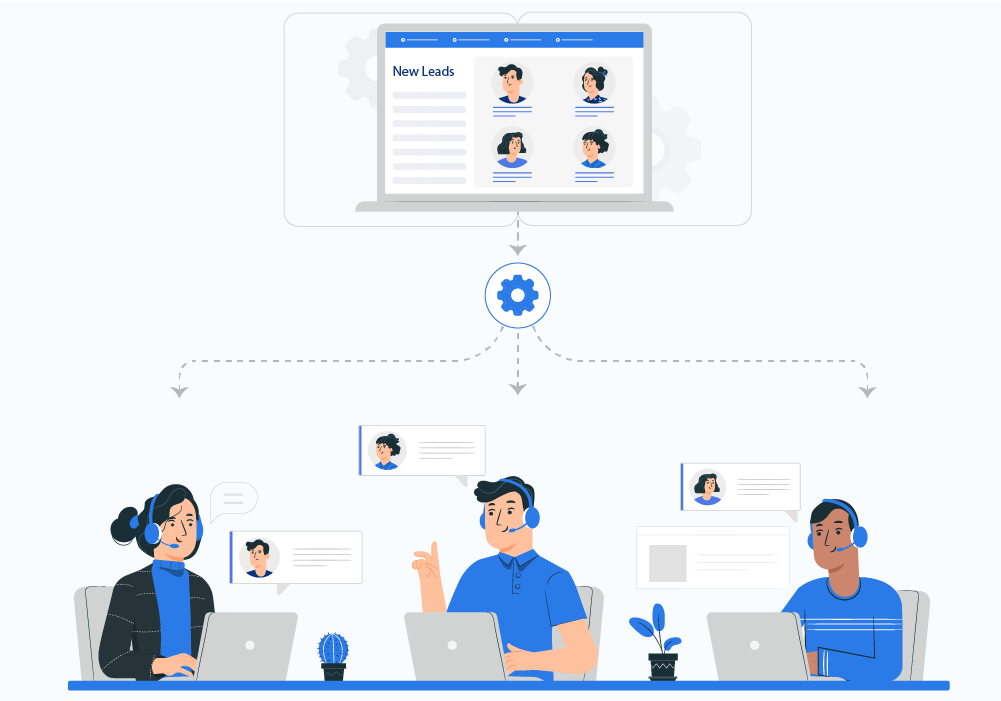
Segmenting customers and identifying their needs drives revenue and increases customer lifetime value (CLV). For example, segmenting customers based on their preferences can help you cross-sell. Customer segmentation can automate personalized campaigns on a large scale, making it easy to reach several people.
Retention
Retention largely depends on your company’s ability to provide positive customer experiences. The number one reason customers switch brands is that they feel unappreciated.
Customer service reps need to convey information in a timely and responsive manner. All interactions between agents and leads should be tracked and recorded for future reference. Then only you’ll be able to deliver a superior CX.
Some of the ways in which you can enable your reps to handle customer interactions better are:
- Instead of keeping a customer wait for query resolution, create a sharable repository of FAQs and self-help documents.
- Prepare how-to videos. Make these videos easily accessible.
- Provide support through chatbots and self-serve portals.
- Track all the interactions. For instance, let’s say, your team member had a heated conversion with a customer and the manager has to step in. They would be able to deal with the situation better if they know the context and the exact conversation.
So these are the steps you can take to enable your teams for customer retention. But the whole sales enablement program will take shape only when you have the right set of tools for each stage of the sales process.
Let’s talk about them.
#5 Tools
Sales enablement technology comprises software or a system that allows the sales team to access content relevant to their target customers.
Moreover, it guarantees that salespeople and their managers have access to training, support, and analysis materials to learn and grow over time.
Your sales enablement toolkit should let you:
- Standardize the process: A system such as CRM software helps you manage leads, track interactions, and automates the sales process—making it easier for the sales user and manager to optimize their routine tasks.
- Prioritize leads and tasks: The aim is to always close as many deals as possible. With a high influx of leads, salespeople often can’t figure out whom to contact first. Your tool should prioritize tasks for your reps so that they can focus more on selling. Again, a CRM software could help here.
- Automate mundane tasks: Meeting schedulers like Calendly help you book meetings, reschedule them if needed, send reminder notes easily and across different time zones.
- Calling: Cloud calling solutions are helpful to call the leads on the go. To make it further easier, integrate cloud telephony with CRM. This way, reps would be able to call the prospect without having to dial the number manually. Plus, the lead record will be updated automatically so that nobody else calls up the lead for the same purpose.

- Regiment sales: Utilize sales tools that help you structure the salesperson’s day. A detailed schedule creates a regimented process, especially for field sales reps. The dashboards on various sales tools also help managers keep a tab on the metrics to track performance.
- Gain insights: Generating insightful reports which show comparative team performance, the number of new leads, an estimate of targets met can motivate your sales teams. You can also use it to evaluate which processes or stages need improvement and which ones are working well.
- Handy tools: Reps often shuttle between the office and customers’ premises. Equipping them with handy tools like Mobile CRM helps them access the customer details, past interactions, and other resources in a go.
Here’s a list of the top 13 sales enablement tools you can consider for your teams.
We’ve discussed a lot about sales enablement. I hope it gave you ideas to enable your teams to perform better.
Before we wrap up, I would like to share how LeadSquared CRM helps its customers in their sales enablement journey.
Developing a Sales Enablement Strategy
Every organization needs a coherent sales enablement strategy to boost their sales team’s productivity and close more deals. Let’s look at how you can develop a strategy that aligns with your business goals:
1. Identify Your Goals and Objectives
Start by clearly defining what you want to achieve with your sales enablement program.
Are you striving to elevate deal values, expedite the sales process, or enhance win ratios? Establishing concrete, measurable objectives will serve as the cornerstone of your strategy and facilitate the monitoring of its efficacy.
Additionally, it’s essential to consider the unique needs and challenges of your organization when setting these goals. Are there specific market segments you want to target? Do you need to focus on improving certain aspects of your sales process, such as lead generation or customer engagement?
By taking these factors into account, you can design your sales enablement strategy to address the areas where it will have the greatest impact and drive meaningful results.
2. Allocate Resources and Budget
Determine the resources—financial and human capital—required to implement your sales enablement strategy. This includes funding for tools and technologies, training materials, and possibly new hires like sales enablement specialists or content creators.
3. Rolling Out Training Programs and Content
Develop comprehensive training programs to equip your sales team with the necessary skills and knowledge. These programs should cover product details, sales techniques, and the use of sales enablement tools.
Simultaneously, roll out targeted content that addresses each stage of the buyer’s journey, ensuring your team always has the right resources at their disposal.
4. Integrating Enablement Tools and Technologies
Choose and integrate sales enablement tools that align with your team’s needs and business processes. Look for CRM systems, content management tools, and analytics platforms that streamline workflows and provide actionable insights. Ensure these tools are user-friendly to encourage adoption and maximize their benefits.
Notably, sales enablement technology is a priority investment for 55% of C-suite leaders, and effective sales training programs contribute to 84% of sales reps achieving their quotas. These statistics underscore the importance of carefully selecting and implementing tools to enhance sales performance significantly.
5. Tracking Progress Towards Goals
Set up key performance indicators (KPIs) and regular checkpoints to monitor the effectiveness of your sales enablement strategy. This can include tracking metrics like sales cycle length, conversion rates, and average deal sizes. Use the data collected to identify trends and areas for improvement.
6. Continuously Refining the Strategy Based on Performance Data
Use the insights gained from performance tracking to refine and optimize your sales and enable the same for:
- Integrating enablement tools and technologies
- Tracking progress towards goals
- Continuously refining the strategy based on performance data strategy
- Adjust training programs, update content, and perhaps even reconsider tool choices to meet your sales team’s needs better
Regularly soliciting feedback from the sales team can also provide valuable insights into what is working and what is not.
How LeadSquared helped Ditto, an insurance advisory, shorten the sales cycle?
Ditto simplifies jargon-filled insurance policies to help the buyers choose the best one. The advisors wanted to share information with customers at multiple touch points. Ditto’s biggest challenges were maintaining the quality of their advisory calls and sharing relevant content with their buyers.
As they began to scale up, these challenges began to slow down conversions. Here’s when Ditto chose LeadSquared as their sales enablement tool.
“Before LeadSquared, managing leads and activities was time-consuming and resource-intensive. We couldn’t dedicatedly focus on the service part, which is what we are good at. But now Leadsquared handles the operations for us, freeing up our bandwidth to improve the quality of our advice.”
Lokesh Gurram, Co-founder, Ditto
LeadSquared has automated sales processes and improved conversations with the customers. As a result, here’s what Ditto achieved with LeadSquared:
| Sales enablement goals | LeadSquared solutions | Results |
| Scaling up calls without losing on the quality | Ability to track call duration and access call recordings | Increased enquiry to lead conversions |
| Saving time lost on manual lead management | Automating lead capture and distribution | Higher sales productivity |
| Shorter sales cycles | Sharing relevant content at each customer touchpoint | Buyers move through sales stages sooner |
The best way to create a successful sales strategy is to understand your organization’s inefficiencies. Once you’ve identified challenges, you can coordinate efforts to overcome them. Every sales enablement strategy requires the right tools to help increase efficiency and decrease manual effort.
A CRM is one such software that offers a variety of tools such as lead distribution, analytics, tracking and measurement of customer journeys, etc. If you’re looking for one such system, LeadSquared’s CRM can come in handy. Try it for free!
FAQs
The process of giving your company’s sales force the resources they need to close more deals is known as sales enablement. Sales enablement also consists of marketing your product or service using content, tools, knowledge, and customer information. Sales enablement strategies need to empower your reps to perform at their best with the best tools.
Sales enablement specialists help businesses develop and grow by increasing sales and profits. They have a thorough awareness of all company products and services and the abilities and knowledge of the industry required to sell them. Sales professionals may also create marketing budgets, conduct research and analysis, manage revenues teams, and anticipate sales.
Popular tools used in sales enablement processes are CRMs, sales intelligence, and collaboration tools. Here’s a detailed list of sales enablement tools.









